Wild Garlic: how to find, cook & eat it
Wild garlic, in season from March to June, is a wonderful (and free!) ingredient. Found in most of Britain, it’s probably the most easily recognisable foraged food, making it perfect for beginners. In this post I’ll tell you where to look for wild garlic, how to identify it and give suggestions of how to eat it.
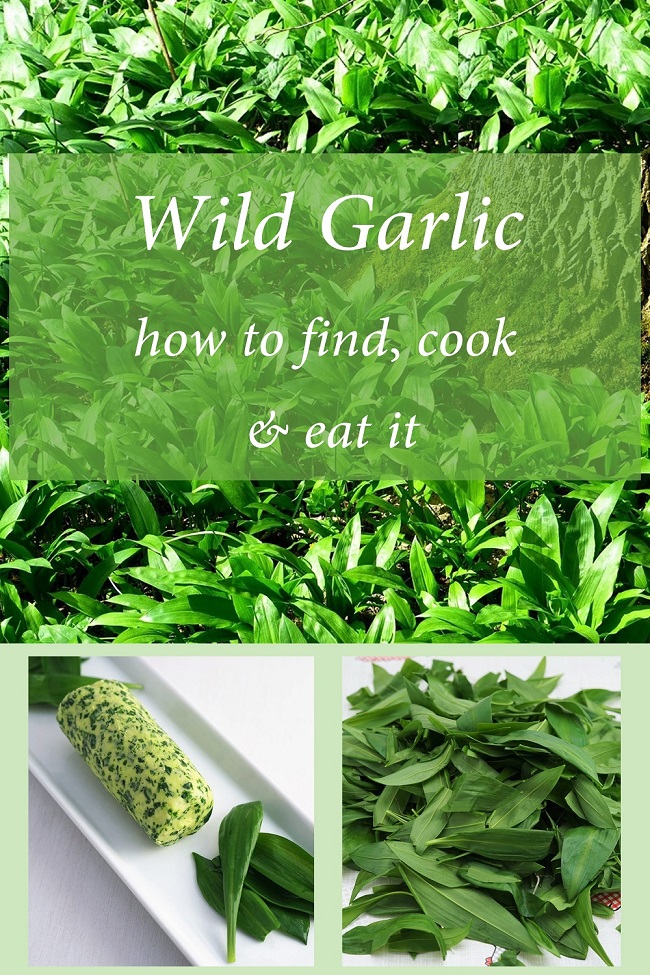
Disclosure: this post may contain affiliate links. If you buy via my links, I may earn a small commission at no extra cost to you.
This is an updated version of a post first published in 2021.
WHAT IS WILD GARLIC?
Wild garlic, sometimes called ransoms, is extremely common. Widespread across Europe, and in much of Britain except for the far north, once you’ve found your first patch it’s unmistakable.
Its botanical name is allium ursinum indicating that it is in the same family as the familiar garlic bulb. Also in the allium family are all types of onion including spring onions and shallots, plus leeks and chives.
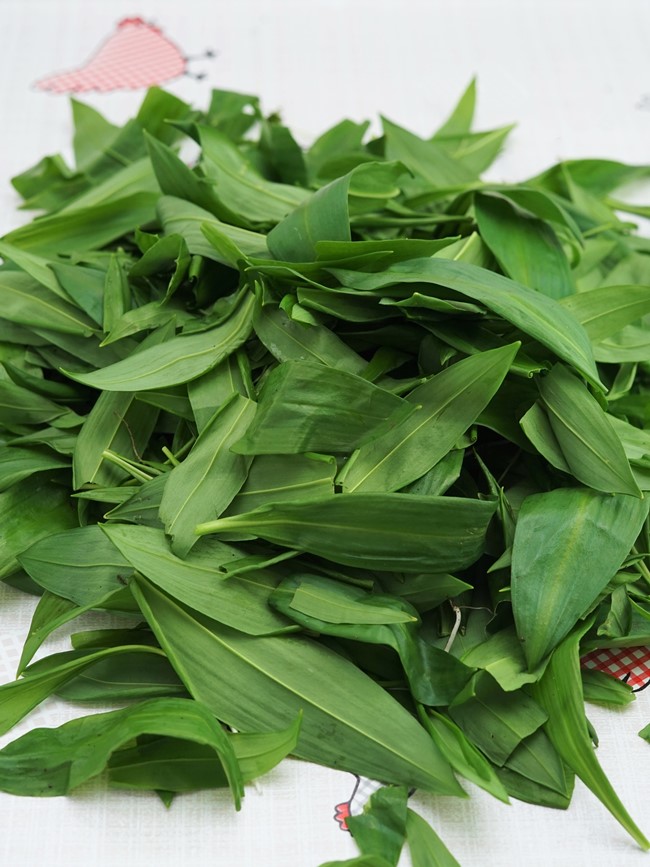
The second part of the name, ursinum, alludes to two of the plant’s common names: bear garlic and bear’s leek. These are said to come from brown bears’ fondness for eating the bulbs when emerging from their winter hibernation.

Although in former times wild garlic was probably primarily used by Britons for medicinal use, these days it’s recognised as a welcome seasonal cooking ingredient.
In this post I talk about using the leaves, but the flowers are also edible. The bulbs can be eaten too although, as we’ll see, in most instances you shouldn’t be digging up the plants.
WHERE TO FIND WILD GARLIC
Whenever I post a picture on social media of foraged food, you can bet your boots someone will ask for the location. But I almost never tell them.
That’s not because I’m a meanie. But because I don’t want hoards descending on a single patch, denuding it. Anyway, wild garlic is so prolific that, unless you live miles away from any odd patch of lightly wooded area or hedgerow, there’s probably going to be some growing quite near to home.
If you search for wild garlic on the internet, you’ll probably find images like the one below.

Yes, there are places like those where you’ll see huge swathes of the green leaves and white, star-like flowers. But don’t be disappointed if there’s nothing like that near you. And for two reasons.
Firstly, if the wild garlic’s flowering then it’s probably past its best. Better to pick earlier in the season. Secondly, you can find little patches of wild garlic in all sorts of nooks and crannies.

MY FAVOURITE SPOTS
Where I get most of mine from is a small patch of ground either side of a rough footpath between a sheep field and an ‘A’ road. It’s shady from the trees and shrubs around. Nearby on one side are the backs of terraced houses. On the other, a car park. Proof that you don’t have to be in the depths of a wood, or in the middle of nowhere, to find wild garlic.

Another place locally where I collect it is a bank, with overhanging trees, between a canal and narrow stretch of river which run parallel to each other.
The place I first picked wild garlic was either side of a popular footpath which is a former railway line, lightly wooded either side. Here’s a photo of the same place, taken later in the season. It was a hot day and my dog decided to sit and take advantage of the dappled shade. He absolutely stank of garlic afterwards!
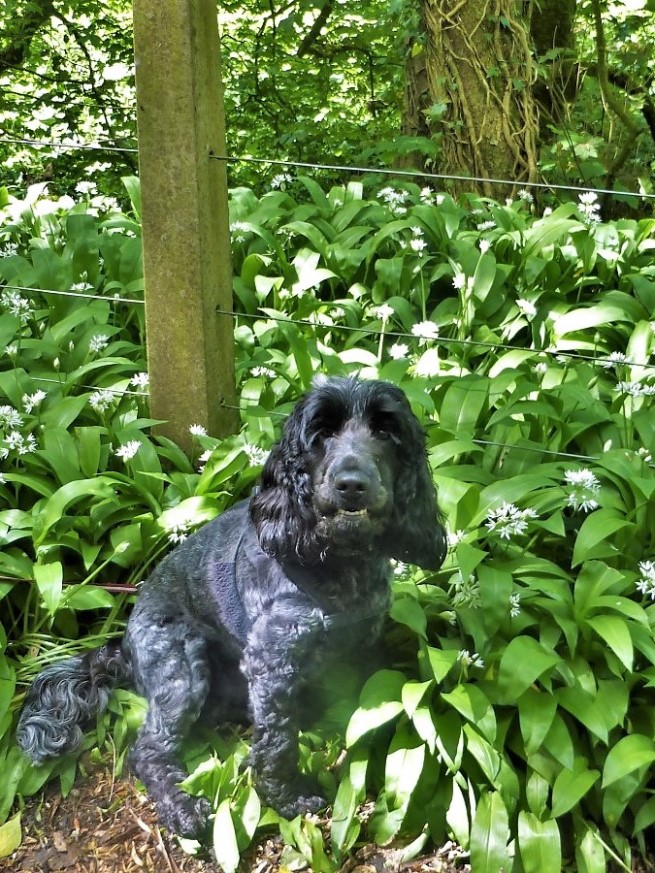
In short, anywhere that’s a bit woody, a bit shady, and a bit damp, is a good spot for foraging wild garlic.
If you’re really stuck on finding some near you, take a look at these suggestions in England, Wales and Northern Ireland recommended by the National Trust.
IS IT LEGAL TO PICK WILD GARLIC?
With a few provisos, the short answer to this is: ‘yes’.
First off, you need to have permission to be on the land. Everywhere I’ve picked wild garlic has been on a public footpath which I have a legal right to be on. Organisations such as the National Trust (see above), The Woodland Trust, and the Wildlife Trusts also allow foraging on their sites.
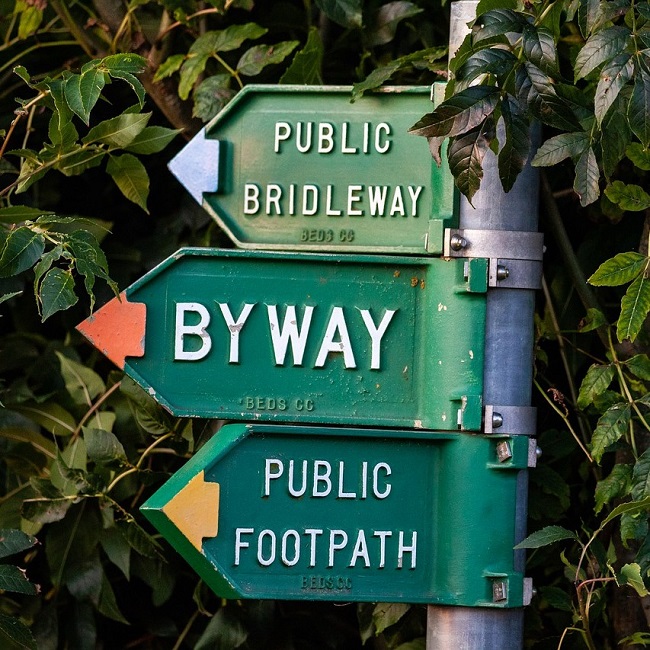
Second, in most instances, wild garlic will come under the common law right to pick ‘fruit, flowers, fungi and foliage’. Do note though, that this is for personal use only, and you should not uproot the plants.
Things to look out for which may restrict your right to forage are any local byelaws or areas designated as Sites of Special Scientific Interest. You also do not have the right to forage on land made accessible under the Countryside and Rights of Way Act 2000, unless you’re on a public footpath that already existed.
Even with the restrictions above though, there are still loads of places where you can legally pick wild garlic.
In writing this section John Wright’s book ‘Hedgerow’ has been invaluable. More details at the end of this post.
HOW TO IDENTIFY & PICK WILD GARLIC
Wild garlic leaves are bright green, long, and with the tip ending in a spear-like point. However, you might smell wild garlic before you see it. Although the leaves have a relatively mild garlic flavour, their aroma is pretty pungent.
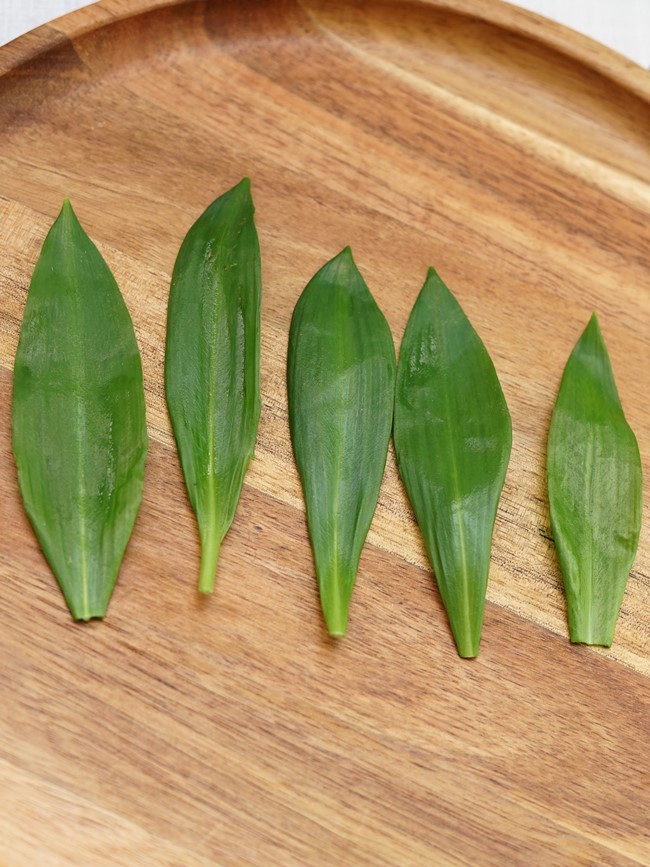
This is actually the biggest help in identifying the plant. Not least because the very distinctive smell is what differentiates it from things which look like it but are poisonous. These include Lily of the Valley, Autumn Crocus/Meadow Saffron, and Lords and Ladies/Cuckoo Pint.
So, when you find a likely clump of leaves, rub one between your fingers. It should smell intensely of garlic. If it doesn’t, then leave well alone. When you’re one hundred per cent sure you’ve found wild garlic, you can start picking.
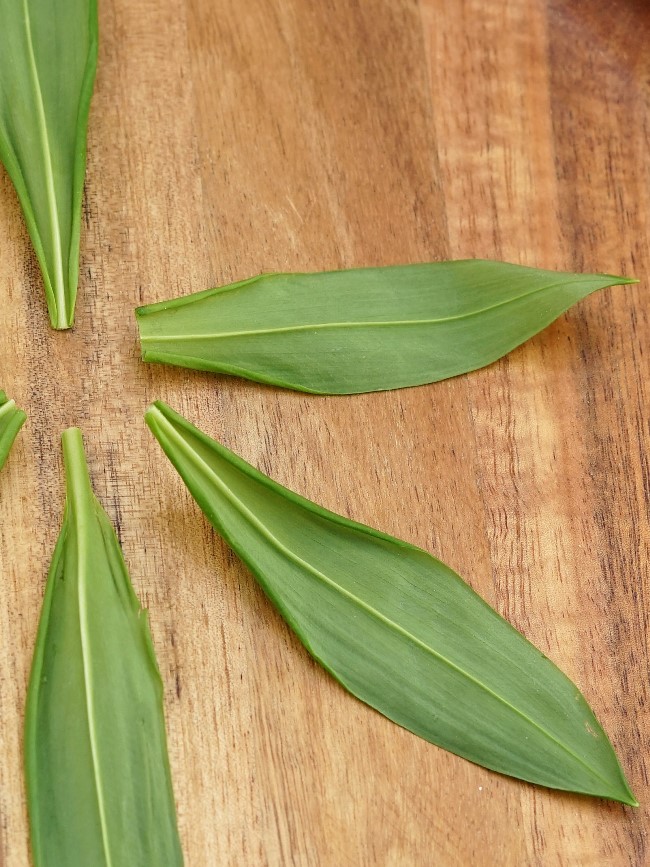
If the patch is on the edge of a path popular with dog walkers, I recommend picking from near the middle to try and avoid any peed-on leaves. You should pick the leaves close to the ground, without pulling up the plants. Some people suggest scissors, but I don’t bother.
The soft leaves can bruise quite easily, so try not to crush them. It would be nice to have a traditional wicker foraging basket. But, as most of my foraging is done while dog walking, that isn’t very practical. If I know I’ll be collecting wild garlic, then I’ll take a plastic bag or box with me. If it’s an impromptu forage, then I’ll make do with a doggie poo bag: unused and unscented of course!
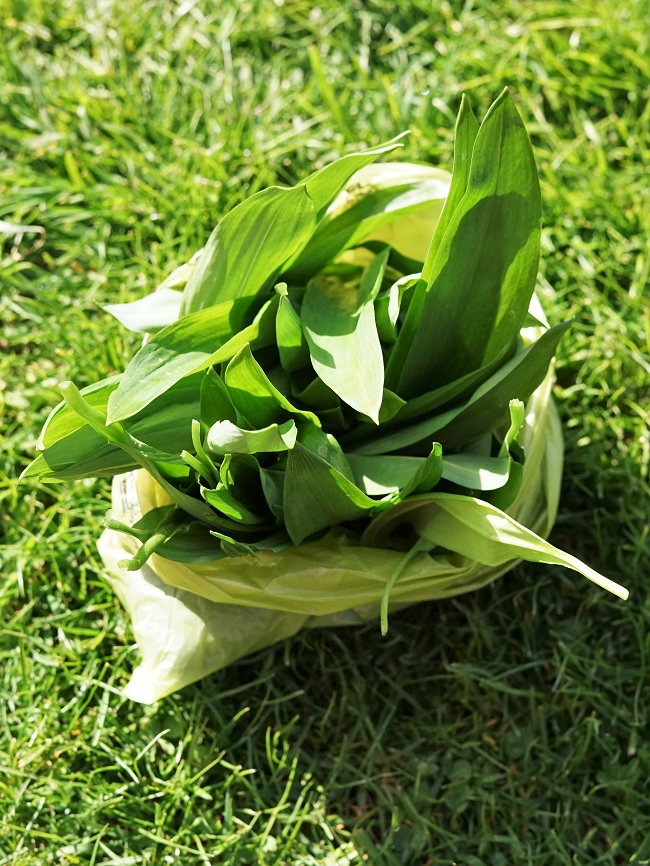
As with all foraging, only take what you need rather than leaving the place bare and ruining it. Leave some for other foragers, as well as wildlife: the flowers are an important source of nectar for bees and butterflies.
WAYS TO EAT WILD GARLIC
Once I’ve got my wild garlic home, I give it a good wash in a bowl of water then leave it to drain. It can then go in a container, with a little water still clinging to the leaves, where it will stay fresh for about a day. You can use it in a huge variety of ways and below are just a few of them.
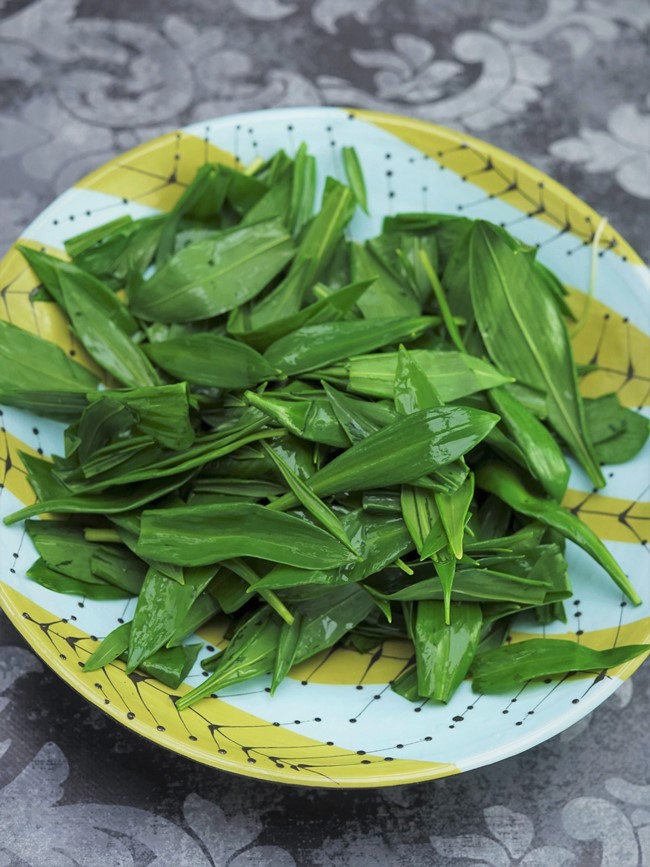
As the flavour is relatively mild, you can be quite generous with the leaves. In fact, I think of wild garlic as one of those fresh herbs commonly used in larger quantities like coriander, mint, or parsley. Look at it that way, and you’ll soon be discovering your own favourite ways to incorporate wild garlic into your cooking.
WILD GARLIC BUTTER
Probably the most common way of using wild garlic is to flavour butter with it. So simple and allows you to preserve the herb for several weeks if you choose to freeze it.
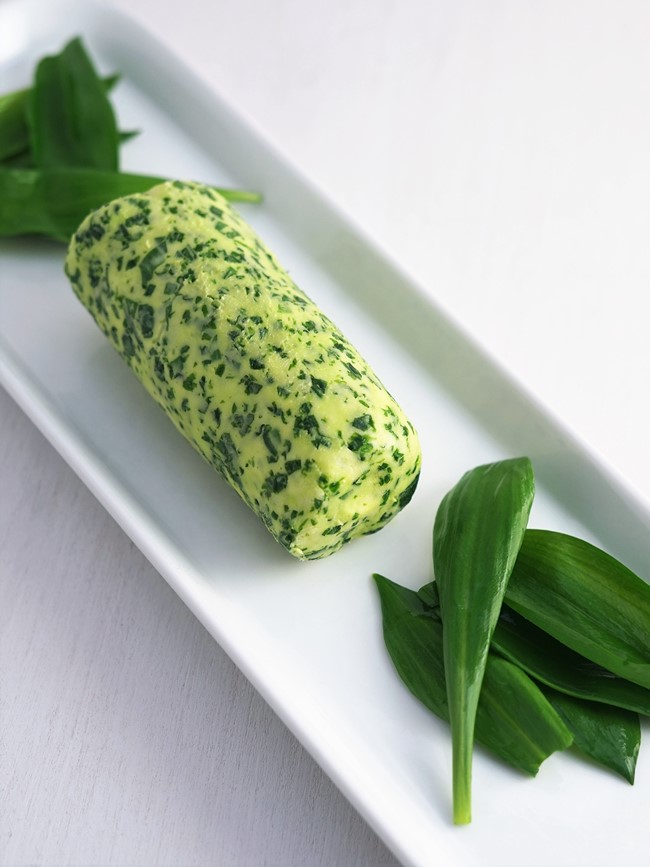
Wild Garlic Butter is incredibly versatile and is great with fish, meat or vegetables as well as potatoes, rice, and pasta. In fact, I’ve written another post dedicated entirely to Wild Garlic Butter.
SPICY FOODS
I think wild garlic, just like regular garlic, is a great partner to spicy foods. And, going back to my earlier point about using it as you might herbs such as coriander or parsley, that point was proved when I added generous amounts to some homemade Indian snacks. Here there’s mixed vegetable pakora and aubergine fritters.
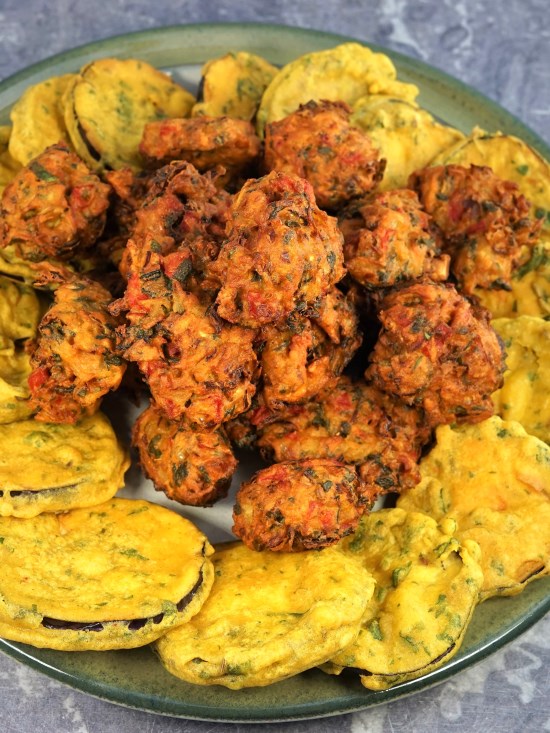
A wonderfully spicy Lebanese potato dish called Batata Harra is finished with lots of fresh herbs like parsley, coriander, mint and dill. And, unsurprisingly, I’ve found that wild garlic in the mix is great too.
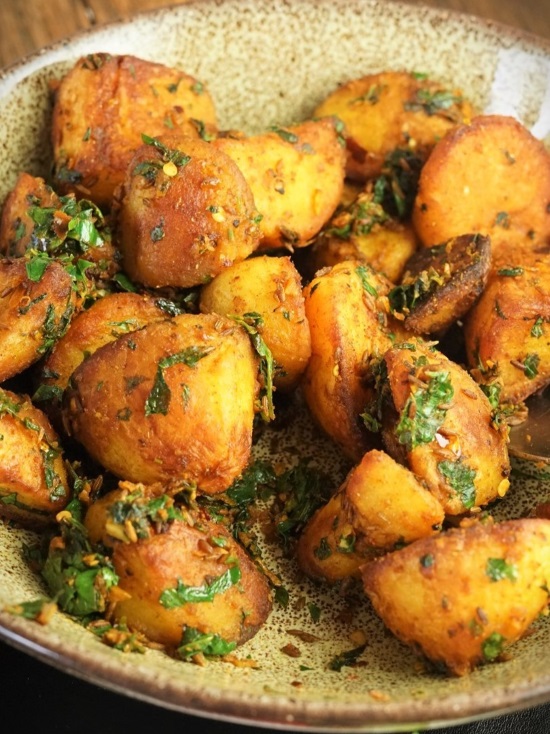
GAZPACHO
Wild garlic is an obvious candidate for adding to soups. But don’t limit yourself to hot soups. One unseasonably warm Spring day, having foraged some wild garlic, I included a large handful in a savoury smoothie.

It was inspired by the classic Spanish cold soup gazpacho in which I’d usually include a small clove of garlic. But I found that I preferred the mellower foraged wild leaves instead.
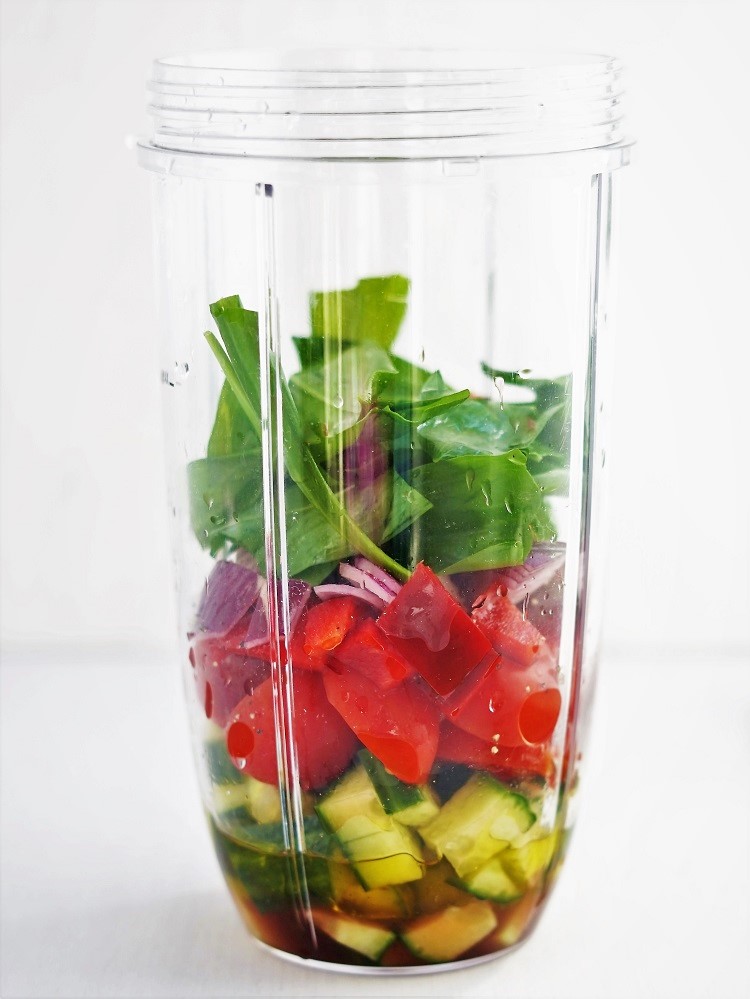
Also in my Gazpacho Smoothie with Wild Garlic are cucumber, tomatoes, red pepper, onion, red wine vinegar, olive oil and a few seasonings.
SALADS
Just as you might add loads of lovely fragrant chopped mint to a summer salad, in spring you can do the same with wild garlic. Here I whizzed some in a simple olive oil vinaigrette and used it to dress a chopped salad of kale, strawberries, cucumber, peppers, and red onion.

SOCCA CHICKPEA FLATBREAD WITH WILD GARLIC
For many years I’ve been making the simple flatbread from southern France called socca. Made with chickpea flour and water, plus olive oil for frying or baking, socca is often flavoured with rosemary. But I’ve discovered that chopped wild garlic added to the batter is brilliant too.
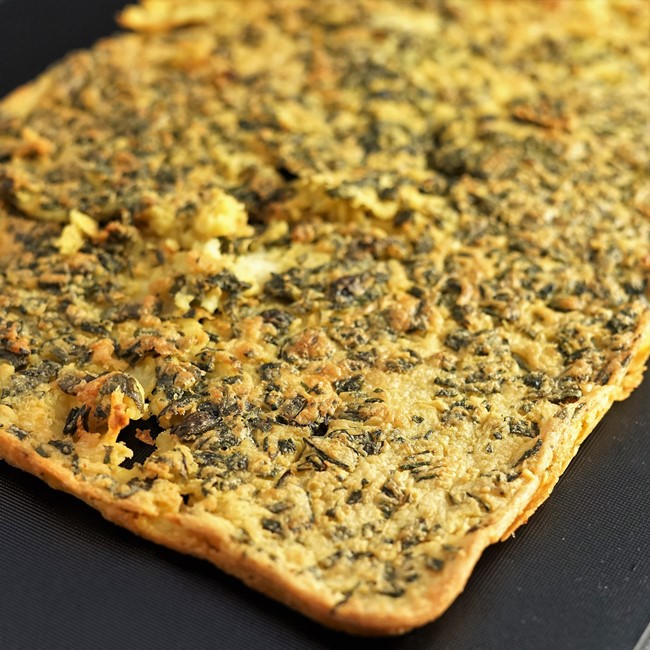
Crispy at the edges, softer in the middle, socca can be a base for loads of toppings. Instead of baking, you can also cook the batter like a pancake and use it as a tasty, gluten-free wrap.
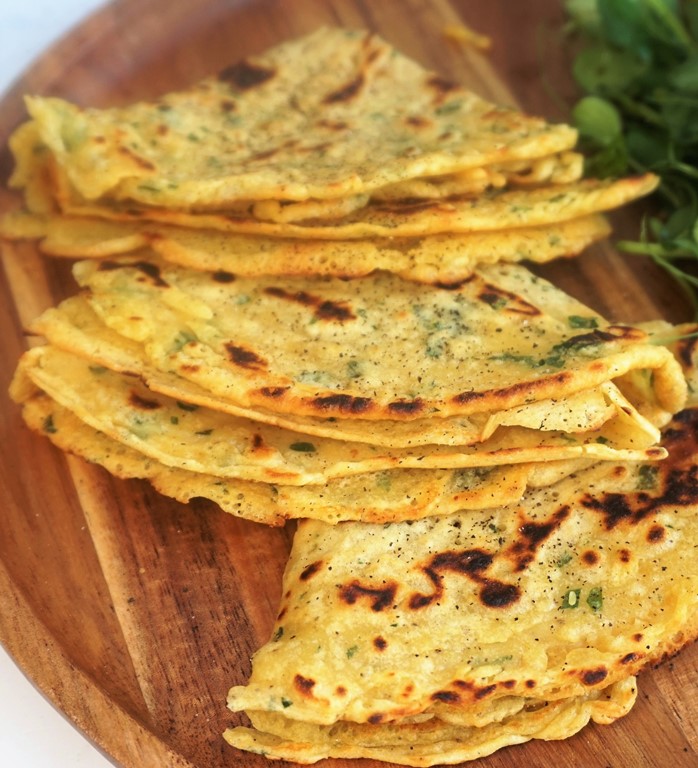
Take a look at my post Socca: chickpea flour flatbreads here.
CREAMY MUSHROOM RISOTTO
One of my favourite comforting vegetarian meals is my Creamy Mushroom Risotto. Finished with slices of brie or camembert, then popped under the grill to brown, this really is extra special. But, when wild garlic’s in season, it’s even better with two big chopped handfuls stirred in just before the topping goes on.
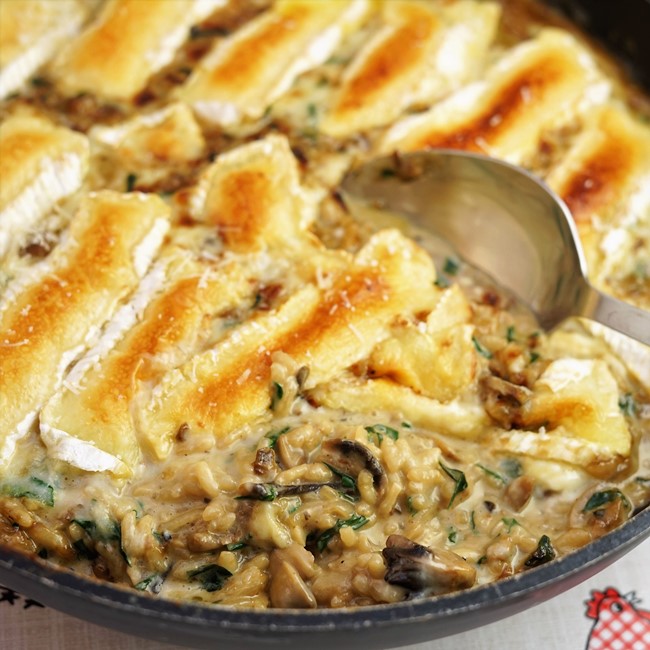
CHEESE WITH WILD GARLIC
One of the classic pairings with garlic is cheese. And that goes for wild garlic just the same as regular garlic bulbs, as illustrated by these fantastic Cheese & Ham Scones with Wild Garlic.
But you could include the foraged leaves in virtually any savoury scone. Try adding a chopped handful to my Very Cheesy Cheese Scones or tender and flaky Cheddar & Cream Cheese Scones with Garlic & Herbs.
Other cheese dishes you can add it to include omelettes, Cheese & Chive Pancakes, Potted Cheese, or my Lentil, Mushroom & Cheese Bake. Or how about a wild garlic version of my take on Anglesey eggs? Here I sauteed leeks and added them to mashed potatoes, including plenty of chopped wild garlic. The mash is spread into a dish, topped with halved hard-boiled eggs, cheese sauce and extra cheese then baked until bubbling. Gorgeous!
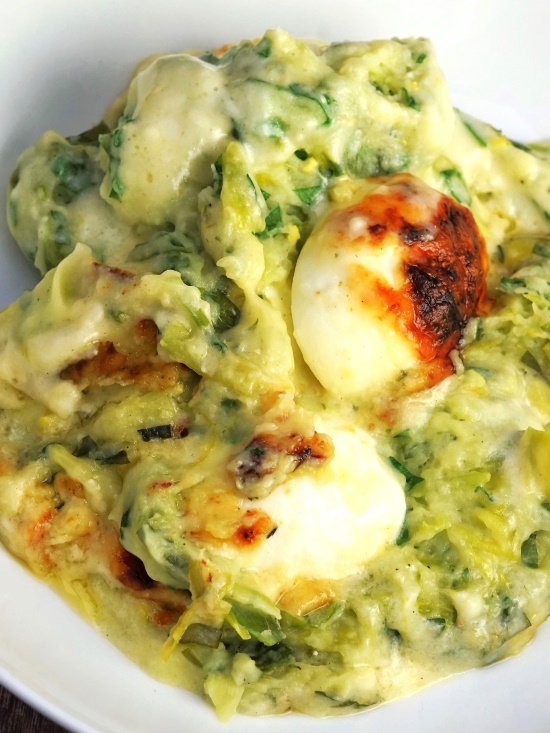
MINT YOGURT WITH WILD GARLIC
I’m sure that, by now, you’re getting the idea that you can use wild garlic virtually anywhere you want a garlic hit coupled with a grassy, herby vibe. A case in point is this yogurt.

I often stir fresh mint and garlic into my Homemade Yogurt to serve over kebabs, Baked Falafel, roast vegetables and the like. So it made perfect sense to add some of the chopped, foraged leaves.
MEATBALLS
Wild garlic also goes well with meats, including these fabulous little meatballs. The ones here I made with local mutton mince. But you could use ordinary lamb, beef, or a mixture of beef and pork and roll into kebabs rather than balls.
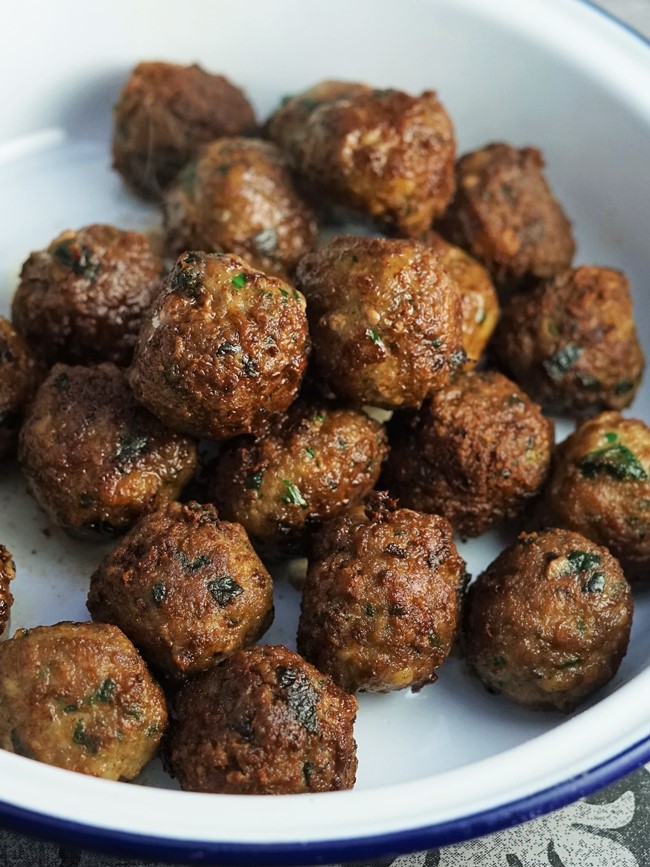
Besides chopped wild garlic, in there were dried oregano, grated red onion, a little cumin, plus salt and pepper. I bound the mixture with an egg, rolled teaspoonfuls into balls, then lightly coated them in flour before shallow frying until golden. Perfect just as they are with salads and bread, you could add them to a tomato sauce and eat with pasta or grains.
A FEAST OF WILD GARLIC
On one occasion, I combined several of the above ideas and came up with a real feast of wild garlic. The base of a great sharing platter was socca with wild garlic. On top of that were the mutton meatballs and blobs of wild garlic yogurt.

These were complemented by feta cheese plus tomatoes, cucumber, olives and onion all seasoned with red wine vinegar, olive oil and oregano. A delicious and fitting start to any wild garlic season.
OTHER WAYS OF ENJOYING WILD GARLIC
- Pesto: whizz or chop the leaves with your favourite nuts, plus olive oil and Parmesan
- Stuffings: use as you might parsley in stuffings for vegetables and meats
- Egg dishes: beat roughly chopped leaves with eggs then make your omelette, frittata, scrambled eggs etc. as usual
- Add to mashed potatoes
- Wilt in olive oil and/or butter and serve with pasta
- Stir into creamy dishes such as cauliflower cheese
- Add to a herby salsa verde
- Add small amounts, chopped, to wraps and sandwiches
- Stir chopped wild garlic through Homemade Ricotta
FURTHER READING
I’ve found the following books extremely useful and highly recommend both.
If you buy through these links, you’re helping to support this blog at no extra cost to you.
Hedgerow by John Wright
One of the River Cottage Handbooks, if you’ve seen any of the tv programmes you’ll recognise the author, John Wright, as Hugh’s foraging guru.
My copy is a fantastic little hardback, but you can get the Kindle edition here. Written in an entertaining way, there’s plenty of large colour photographs to help you identify plants from woodlands as well as hedgerows. Entries are quite detailed, and the plants covered are all the common ones you’d expect plus some more unusual ones.
It includes a forager’s calendar, detailed information on the legalities of foraging, plus recipes. A very enjoyable and educational read, and one you’ll keep coming back to.
Food for Free by Richard Mabey
First published in 1972, Richard Mabey’s most famous work is a classic. It covers similar ground to Hedgerow plus has a section on fungi. My paperback edition is in the Collins Gem series and, pocket-sized, is perfect for taking out foraging. There’s also a Kindle edition here.
With coloured drawings as well as photographs, there’s a huge amount of packed into this little book. Not just how to identify over a hundred plant species, but their history and folklore, plus some recipes.
Happy foraging!

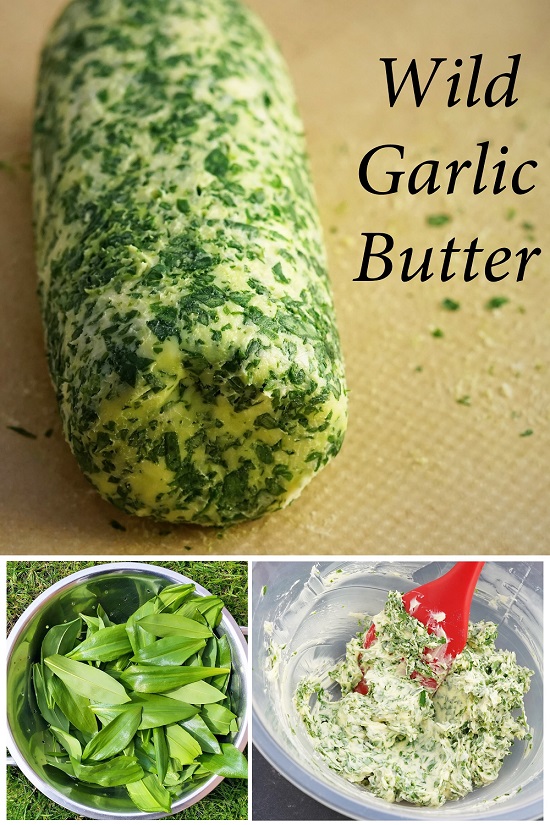
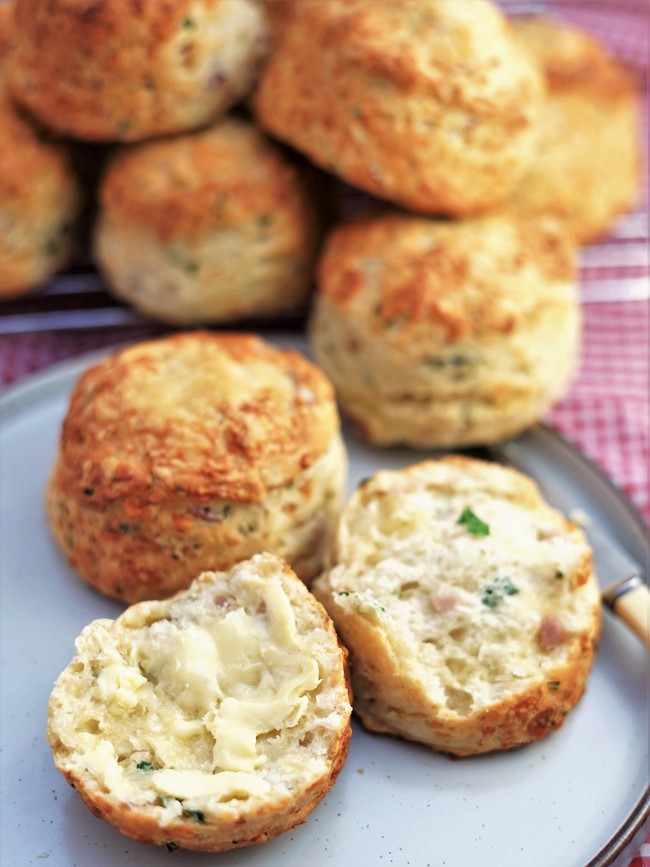
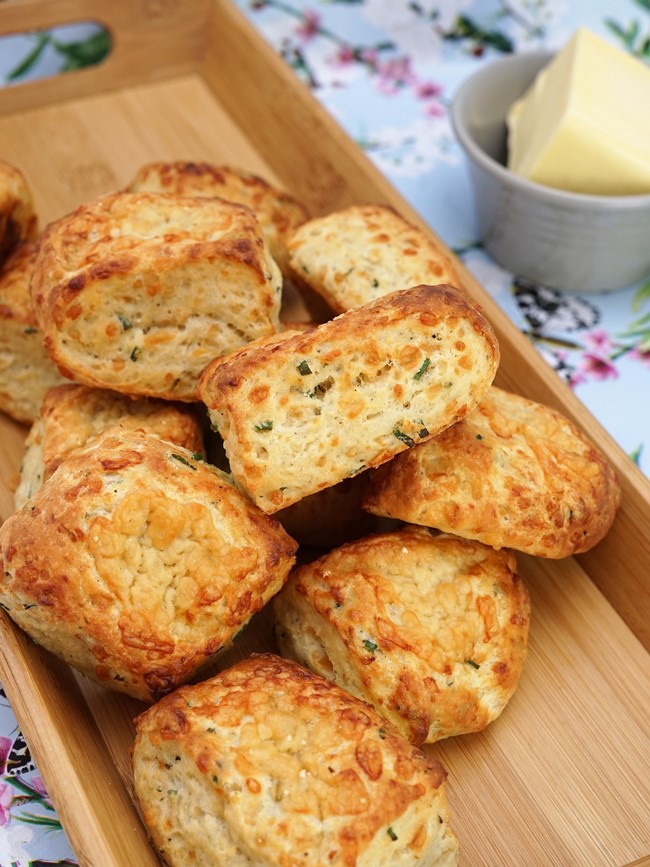
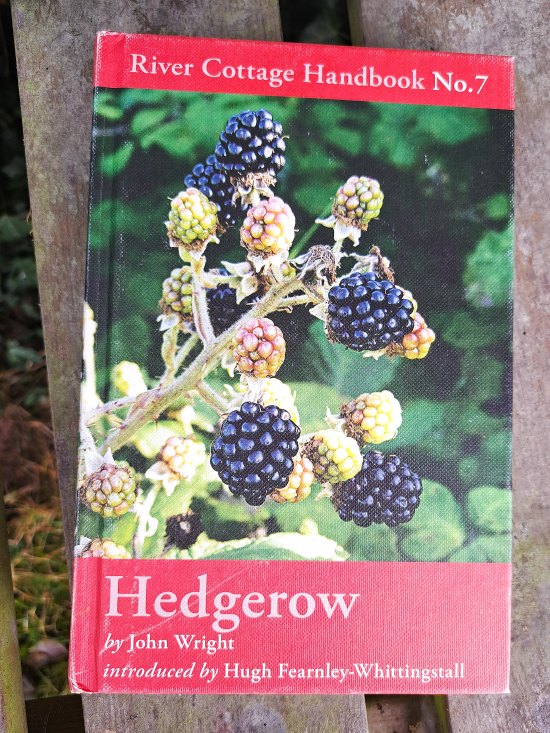

I love wild garlic, I make wild garlic pesto , chopped wild garlic Parmesan cheese, pine nuts, pepper, and good olive oil it really good
Lovely! My local patch of wild garlic is just coming up so I should be picking soon!